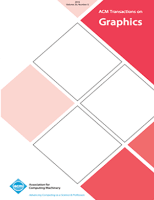
ACM TRANSACTIONS ON GRAPHICS
Scope & Guideline
Advancing Innovations in Computer Graphics
Introduction
Aims and Scopes
- Advancements in Rendering Techniques:
TOG publishes research that explores new rendering methods, including real-time rendering, physically-based rendering, and differentiable rendering, enabling more realistic and efficient image synthesis. - 3D Modeling and Animation:
Research on 3D modeling techniques, including procedural generation, character animation, and simulation of physical phenomena, is a core area, facilitating the creation of complex and dynamic visual content. - Computer Vision and Graphics Integration:
The journal emphasizes the intersection of computer vision and graphics, focusing on methods that leverage visual data for graphics applications, such as image-based rendering and scene reconstruction. - Machine Learning in Graphics:
TOG highlights the application of machine learning techniques in graphics, including neural networks for image generation, style transfer, and data-driven approaches to modeling and simulation. - Interactive Graphics and User Interfaces:
Research that enhances user interaction with graphical systems, including virtual and augmented reality, user-centered design for graphics applications, and intuitive control mechanisms, is also a significant focus. - Material and Texture Representation:
The journal covers advancements in the modeling and rendering of materials and textures, including BRDF modeling, texture synthesis, and appearance capture, contributing to more realistic visual representations.
Trending and Emerging
- Neural Rendering and Deep Learning:
There is a significant increase in research on neural rendering techniques, leveraging deep learning for image synthesis, scene understanding, and interactive graphics, indicating a shift towards AI-driven methodologies. - Virtual and Augmented Reality:
The journal is witnessing a growing focus on VR and AR applications, including immersive user experiences, real-time rendering, and interaction techniques, responding to the rising demand for such technologies. - Physics-Based Simulation:
Research in physics-based simulation is trending upwards, encompassing fluid dynamics, soft body dynamics, and other physical phenomena, which enhances realism in graphics applications. - Generative Models and Procedural Content Generation:
The use of generative models for content creation, including procedural generation of textures, models, and animations, is increasingly prevalent, reflecting a demand for automated and scalable solutions. - Data-Driven Graphics Techniques:
Emerging themes include data-driven approaches for graphics applications, such as scene reconstruction from data, machine learning for graphics tasks, and the integration of large datasets into graphics workflows.
Declining or Waning
- Traditional 2D Rendering Techniques:
There is a noticeable decline in the publication of papers focused on conventional 2D rendering techniques as the field shifts towards more immersive 3D rendering and interactive graphics. - Static Scene Representation:
Research centered on static scene representation is becoming less common, with a growing emphasis on dynamic and interactive environments that better reflect real-world complexities. - Hardware-Specific Graphics Techniques:
As software-based solutions and general-purpose computing become more prevalent, papers focusing on hardware-specific optimizations for graphics rendering are appearing less frequently. - Basic Geometry Processing:
The exploration of fundamental geometry processing techniques is waning, as the focus has shifted towards more advanced and application-driven methodologies in graphics. - Legacy Graphics APIs and Techniques:
Research related to older graphics APIs and techniques is seen less often, as newer approaches and technologies take precedence in the field.
Similar Journals
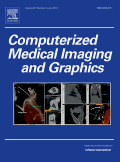
COMPUTERIZED MEDICAL IMAGING AND GRAPHICS
Exploring Cutting-edge Research in Medical Imaging and GraphicsCOMPUTERIZED MEDICAL IMAGING AND GRAPHICS, published by PERGAMON-ELSEVIER SCIENCE LTD, is a leading international journal that has significantly contributed to the fields of medical imaging, graphics, and informatics since its establishment in 1988. With a remarkable reputation reflected in its Q1 quartile rankings across multiple categories—including Computer Graphics, Health Informatics, and Radiology—this journal maintains a prominent position in the academic community, evidenced by its Scopus rankings where it ranks in the top percentile across various disciplines. The journal aims to advance knowledge and innovation within the intersection of technology and healthcare, featuring high-quality research that addresses contemporary challenges in medical imaging and graphical methodologies. With no open access options currently available, this journal serves as a crucial resource for researchers, professionals, and students who are at the forefront of advancing imaging technology and its applications in medicine.

Advances in Computational Design, An International Journal
Elevating the Standards of Design through Computational InsightsAdvances in Computational Design, an esteemed international journal published by TECHNO-PRESS, focuses on the dynamic intersection of computational mathematics, mechanics, and computer graphics. This journal provides a platform for researchers and practitioners alike to contribute to the rapidly advancing fields of computational design, fostering innovation in methodologies and applications. With a ranking placing it in the Q4 category for Computational Mathematics and in the Q3 categories for both Computational Mechanics and Computer Graphics, it is recognized for its impact within academic and professional circles. Given its launch in 2016, the journal has cultivated a significant community of scholars aiming to push the boundaries of computational techniques. The Scopus rankings demonstrate its visibility and relevance, with notable positions in key categories. Although the journal operates under a traditional subscription model, the rich array of research articles available through its platform continues to enrich scholarly dialogue and advance understanding in the field. For those pursuing cutting-edge developments in computational design and its applications, Advances in Computational Design serves as an invaluable resource.

Journal of Imaging
Advancing the Future of Imaging TechnologiesThe Journal of Imaging, published by MDPI, is an esteemed open-access journal dedicated to advancing the fields of Computer Graphics, Computer Vision, and Electrical Engineering. Since its inception in 2015, this journal has established a significant presence in the academic community, reflected by its impressive rankings in Scopus, including a Q2 quartile in multiple categories such as Computer Vision and Pattern Recognition and Radiology. With a commitment to disseminating high-quality research, the journal offers a platform for innovative studies and practical applications, making it an essential resource for researchers, professionals, and students alike. Operating from its base in Basel, Switzerland, the journal continues to promote scholarly work that pushes the boundaries of imaging technologies, while contributing to the global discourse in its respective fields. The open-access model ensures that valuable research is readily available, fostering collaboration and knowledge-sharing across disciplines.

Computational Visual Media
Unlocking the potential of visual media through technology.Computational Visual Media, published by TSINGHUA UNIVERSITY PRESS, is a premier open access journal dedicated to advancing the fields of Artificial Intelligence, Computer Graphics and Computer-Aided Design, and Computer Vision and Pattern Recognition. Since its inception in 2015, it has established a robust position within the academic community, consistently achieving Q1 rankings across its categories as of 2023. With exceptional Scopus rankings, including a remarkable percentile standing in the top 10% globally, the journal serves as a vital resource for researchers, professionals, and students eager to explore cutting-edge methodologies and technologies in computational visual media. The journal’s open access format enhances accessibility, fostering global collaboration and dissemination of knowledge, making it an indispensable platform for those at the forefront of innovation in these dynamic fields. The journal is headquartered in Beijing, China, and aims to publish high-quality research that not only contributes to theoretical advancements but also addresses practical challenges within computational visual technologies.
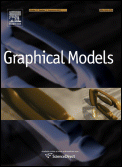
GRAPHICAL MODELS
Empowering Research through Open Access GraphicsGRAPHICAL MODELS, published by Academic Press Inc Elsevier Science, is a cutting-edge journal in the fields of Computer Graphics and Computer-Aided Design, Geometry and Topology, Modeling and Simulation, and Software. Since becoming Open Access in 2023, it has expanded its reach, facilitating scholarly communication and encouraging a diverse range of submissions. Operating from the heart of San Diego, United States, the journal has established itself with an impressive ranking, including a Q2 category in multiple disciplines and a notable position in Scopus, particularly in Geometry and Topology, where it ranks #8 out of 106. This journal aims to provide a comprehensive platform for innovative research and application-focused studies, attracting the attention of researchers, professionals, and students who are keen to explore the dynamic landscape of graphical models and their implications across various scientific and engineering domains. With its commitment to publishing high-quality research, GRAPHICAL MODELS is a pivotal resource for anyone interested in advancing the frontiers of graphical representations and simulations.
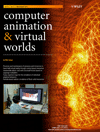
COMPUTER ANIMATION AND VIRTUAL WORLDS
Transforming Ideas into Immersive Experiences.COMPUTER ANIMATION AND VIRTUAL WORLDS, published by Wiley, is a pivotal journal in the fields of Computer Graphics and Computer-Aided Design, as well as Software. With a focus on the intersection of technology and creativity, the journal provides a platform for researchers and professionals to share innovative studies, new methodologies, and insights that shape the future of computer animation and virtual environments. Currently holding a Q2 category in Computer Graphics and a Q3 in Software for 2023, it ranks #63 out of 106 in its niche, highlighting its influence and relevance in the academic community. Though the journal operates under a subscription model, it also offers options for open access, ensuring that a broader audience can engage with groundbreaking research. The journal has been publishing continuously since its inception in 2004 and looks forward to further contributions as it moves towards its 20th anniversary in 2024. Whether you are a seasoned researcher, an industry professional, or a student eager to explore these dynamic fields, COMPUTER ANIMATION AND VIRTUAL WORLDS is an essential resource for advancing knowledge and innovation.
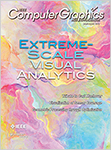
IEEE COMPUTER GRAPHICS AND APPLICATIONS
Transforming Ideas into Visual RealityIEEE Computer Graphics and Applications is a premier journal published by the IEEE Computer Society, focusing on the rapidly evolving fields of computer graphics and computer-aided design. With an established history since 1981, this journal has become a vital platform for disseminating innovative research and applications that bridge theory and practice. It is indexed in Scopus, holding a respectable rank of #49 in Computer Graphics and Computer-Aided Design and #250 in Software, reflecting its significant contribution to the academic community with a notable 54th and 38th percentile, respectively. While it currently operates without open access options, the journal continues to provide valuable insights that cater to researchers, professionals, and students alike, striving to push the boundaries of technology and creativity. With plans to converge until 2024, IEEE Computer Graphics and Applications remains committed to fostering advancements in the discipline, making it an essential resource for those at the forefront of computer graphics innovation.
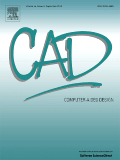
COMPUTER-AIDED DESIGN
Catalyzing Progress in Computer-Aided Design and ManufacturingCOMPUTER-AIDED DESIGN is a premier journal published by Elsevier Science Ltd, dedicated to the dynamic fields of Computer Graphics and Computer-Aided Design, as well as Industrial and Manufacturing Engineering. With a long-standing history since its inception in 1968, this journal plays a vital role in disseminating high-quality research and innovative methodologies that shape the future of design and engineering practices. It is positioned in the upper quartiles (Q1 and Q2) across multiple categories, highlighting its impact and reputation, with a notable 74th percentile ranking in Computer Graphics and Computer-Aided Design related fields. Researchers, professionals, and students will find valuable insights and advancements that not only push the boundaries of knowledge but also facilitate practical applications in the industry. The journal's emphasis on enhancing collaboration between academia and industry aligns with contemporary trends towards integrated design and manufacturing processes, making it an essential resource for anyone looking to stay at the forefront of technological advancement. Authors are encouraged to submit original articles that contribute to the multidisciplinary discourse within these domains.
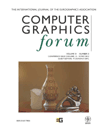
COMPUTER GRAPHICS FORUM
Pioneering Innovations in Computer GraphicsCOMPUTER GRAPHICS FORUM, an esteemed journal published by Wiley, is a leading platform for disseminating cutting-edge research in the fields of computer graphics and computer-aided design. With a prestigious Q1 ranking in both Computer Graphics and Computer-Aided Design and Computer Networks and Communications (2023), this journal consistently showcases high-impact studies that influence the development of visualization techniques and graphic systems. Covering a wide array of topics from rendering algorithms to virtual and augmented reality applications, COMPUTER GRAPHICS FORUM is committed to fostering innovation and interdisciplinary collaboration within the global research community. Although it does not offer open access, the journal maintains a rigorous peer-review process, ensuring the highest standards of academic quality and integrity. With its rich history since 1982 and an ongoing commitment to advancing the state of knowledge in computer graphics, this journal is essential reading for researchers, industry professionals, and students looking to stay at the forefront of technological advancements.

Visual Informatics
Transforming Ideas into Visual RealitiesVisual Informatics is a premier academic journal published by Elsevier, dedicated to advancing the fields of computer graphics, computer-aided design, and human-computer interaction. Since its launch in 2017, this Open Access journal has swiftly established itself as a leading platform for innovative research, reflected in its impressive impact factor and robust rankings in various Scopus categories. In 2023, it proudly holds positions in the top quartile (Q1) for Computer Graphics and Computer-Aided Design, Human-Computer Interaction, and Software, showcasing its influential contributions to these dynamic fields. Based in Amsterdam, Netherlands, Visual Informatics encourages the dissemination of high-quality, peer-reviewed articles that explore the intersection of visual technology and user experience, serving as an invaluable resource for researchers, professionals, and students seeking to stay at the forefront of these evolving disciplines.